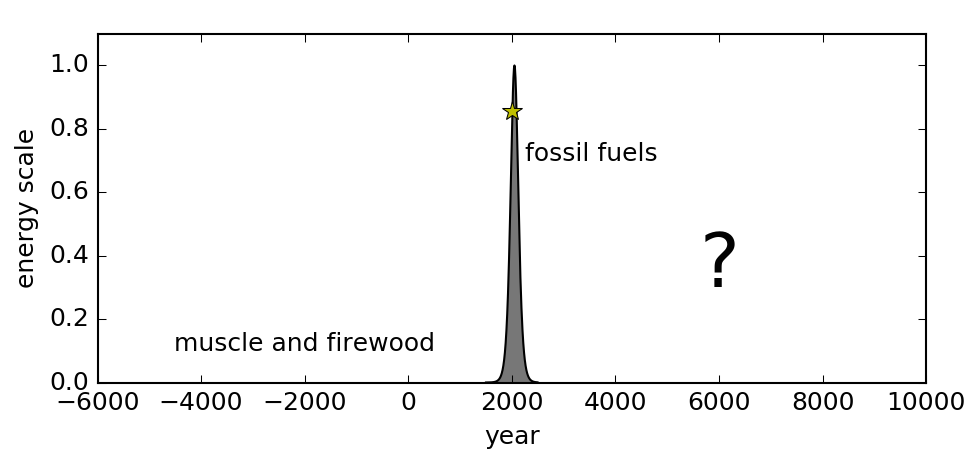You may be aware that our food industry is heavily dependent on fossil fuels, to the point that it takes about 10 kcal of energy input to deliver 1 kcal of consumed food. The enormous energy multiplier is due to extensively mechanized plowing, harvesting, processing, and delivery of food; fossil-fueled fertilization (via methane feedstock); refrigeration and preparation; then of course food waste. In olden times, when all agricultural energy came from muscle power that needed to be fed, the system would collapse (i.e., starve and fail) if energy inputs exceeded energy ingested.
Some have phrased our current practice as “eating fossil fuels,” and in fact a 2006 book by Dale Allen Pfeiffer had this title. So what? More power to us—literally.
The problem, people, is that fossil fuels are finite. We have already consumed a fair fraction (roughly half?) of the accessible allotment. And before concluding that we therefore have a century or so before needing to worry about the consequences, realize that the inflection point happens around the halfway mark, wherein decreasing ease of access tends to result in ever-decreasing output rates in the second-half of the resource. We see this behavior in individual oil fields and in regional (country-scale) aggregations. The low-hanging fruit is taken first, sensibly, so that what’s left is more stubborn.
Because human population has been substantially boosted by fossil fuel input, we have put ourselves into a vulnerable position. What happens when fossil fuels begin to give out on us?
It’s been a while since I did any, you know, math for this blog, as I seem to be living my own worst nightmare and turning into an armchair philosopher (oh the shame). In this post, I return to something closer to math. It’s illustrative rather than quantitative, but helps frame the peril we have put ourselves into in a low-effort sort of way.
Views: 9284











